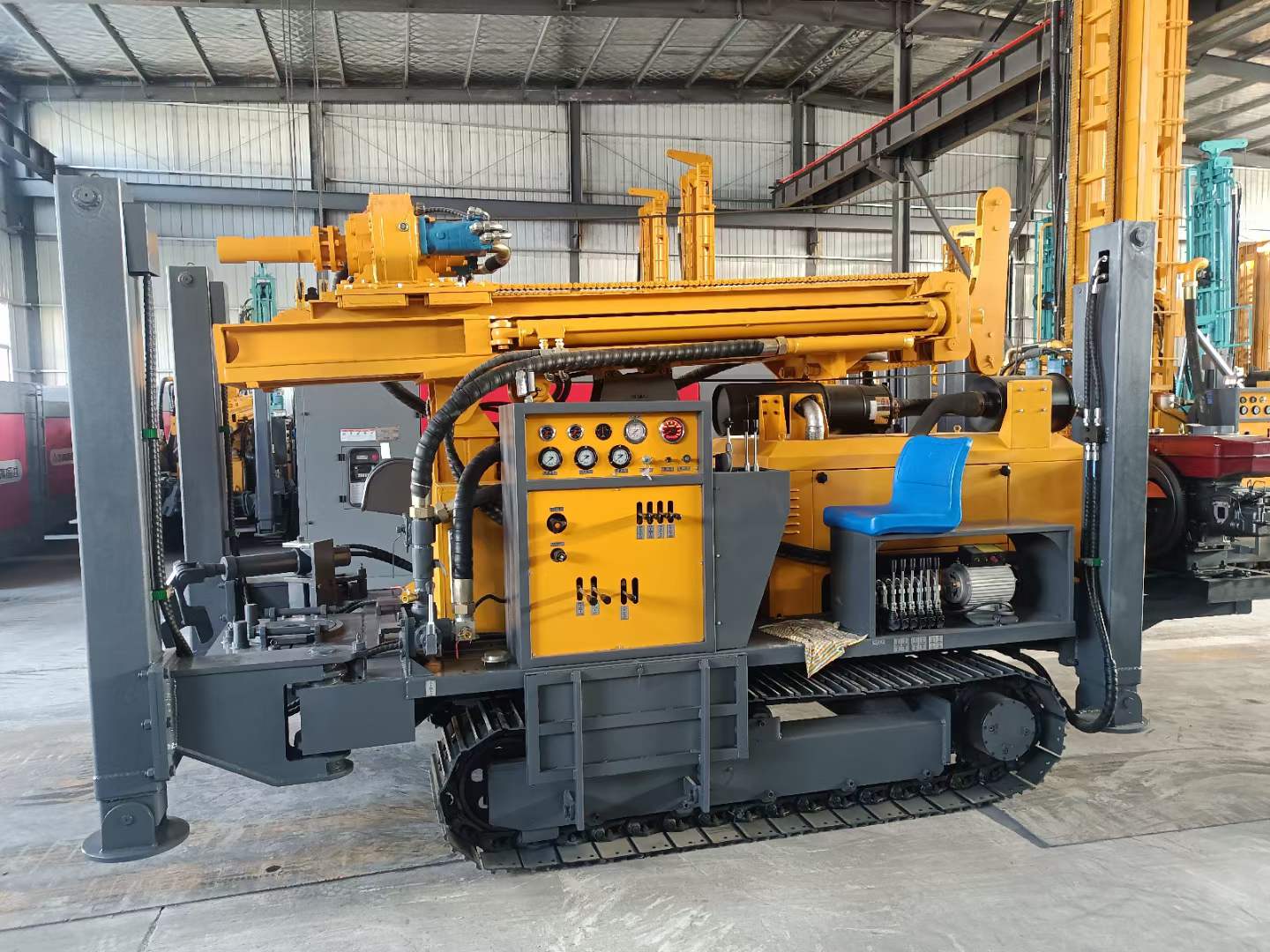Pneumatic water well drilling rig manufacturers understand that pneumatic water well drilling rigs require different methods to achieve optimal results when encountering different geological formations during drilling. This includes encountering different geological formations, such as quicksand and gypsum layers. If gypsum intrusion occurs during drilling with a pneumatic water well rig, calcium ions can be removed by adding soda ash, decalcifying, and reducing viscosity. Furthermore, viscosity reducers with strong calcium tolerance can be used to control viscosity reduction and compensate for the shortcomings of fluid loss reducers and anti-slump agents.
1. Gypsum Layer
Before drilling the diamond gypsum layer, the drilling fluid on the drilling platform should be pre-treated to reduce solids and viscosity. Gypsum treatment agents (such as soda ash, decalcifying, and viscosity reducers) should be added. Treatment agents for treating gypsum layers should be prepared in advance based on the construction materials of adjacent wells. Increasing the pH of the drilling fluid can improve the resistance of small water well rigs to gypsum contamination.
2. Quicksand Layers
When drilling in quicksand formations, it’s necessary to increase the viscosity of the drilling fluid and the bentonite content of the water well drilling fluid, generally requiring at least 10%. To improve the wall-building performance of the water well drilling fluid, the displacement rate was appropriately reduced during the project, reducing erosion in the quicksand layer. Before pulling out of the hole, this section must be sealed with a thick mud with a viscosity greater than 80 to ensure smooth tripping, electric logging, and casing installation by the small water drilling rig.
3. Quartz Sandstone
Quartz sandstone is a very hard rock, often resulting in slow drilling speeds. Drilling one meter may reveal two meters of sand, resulting in severe drill string vibration, frequent slag cutting, and drill bit burial failures. Therefore, a detailed understanding of the terrain is essential.
Clean water lacks the lubricity of mud, causing the drill string to vibrate violently in hard rock, shattering the rock. Clear water is highly selective, making it difficult for the flushing fluid to remove the increasingly large cuttings from the hole. Sand-like rock debris constantly floats and sinks in the hole. Using a powder extraction hose can result in one or two meters of sand being drilled. A slight mistake can bury the drill, and excessive sand can complicate hole cleaning.
Sandstone is formed by sedimentation and is an extremely hard rock. Small pneumatic water well drills typically drill shallow holes (30, 33, 54, 200 meters). Therefore, diamond drill bits are typically used with clean water and automatic slurry generation. This often results in slow drilling speeds, with one meter of drilling speed potentially revealing two meters of sand. This can also lead to severe drill runout, frequent slag inclusions, rock collapse, and drilling failures.
Solution: If mud drilling is uneconomical, sand production can be reduced by reducing the runout of the small water well drill. Nitro-based acid-base additives can be added to the clean water for vibration reduction and lubrication, reducing drill runout and sand production. Continue cleaning the pneumatic water well drill hole to ultimately resolve the problem!
If you need help with water well drilling rig, we could provide you with complete solution!
E-mail: ksjd2008@163.com
Phone:+86-209-81320570
Post time: Aug-14-2025




